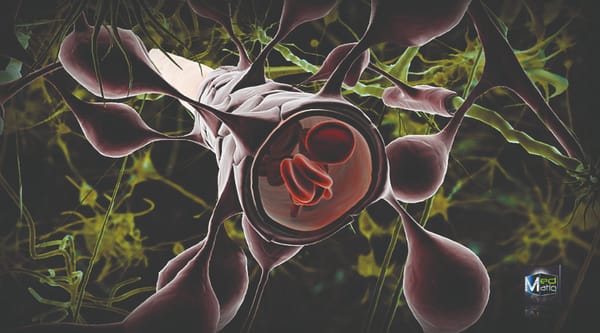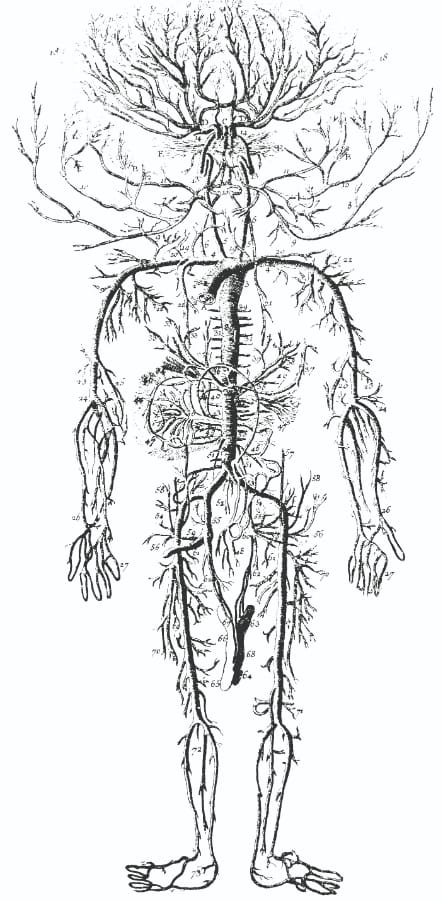Smells like Quantum?
Can physics provide a solution to an age-old biological question?

In recent years, science has given us incredible insights into the way our universe works: we have sequenced the entire human genome, broken matter into the most fundamental building blocks, and looked back to the seconds following the Big Bang. You might think that by now we would have answered simple questions such as ‘how exactly does smell function?’; however, you may be surprised to know that academics are still unsure as to the precise mechanics of one of our five basic senses.
This problem is slightly more complex than you might think. A simple view one might have would be that when smelling a substance, a chemical reaction of some sort may occur, whose products in some way triggers a neurological response.
Consider limonene: (S)-limonene smells of lemon, while its mirror image (R)-limonene smells of oranges. Consequently, researchers began to investigate, and this led to the development of the “lock-and-key” hypothesis, which states if the receptors are presumed to work as locks, only a complementary key (or odorant molecule) of exact shape would bind and trigger a response.
This sheds some light to the above example. The two mirror images (also known as “enantiomers”) of limonene have slightly different shapes and so will bind to different receptors, and thus will smell differently. Fans of murder mysteries may be able to spot a fundamental flaw in this theory. Using the example of cyanide (which has a very characteristic almond smell due to the chemical benzaldehyde), the two enantiomers of this molecules have very different shapes yet smell almost identical. Furthermore, there is also the issue of the fact that the sense of smell is incredibly selective, as indicated by the orange-lemon example.
“A number of examples show the lock-and-key model is not correct for our sense of smell”
The proteins in our nose, however, are prone to ‘non-specific binding’ such that if the key is not a direct fit, binding would still occur. In a recent investigation, bees were able to tell the difference between two versions of the same molecule, with deuterium substituted for hydrogen in one of the odorants.
Hereafter, physical chemists decided to take on this problem. This question is one of many in recent years where scientists have turned to quantum mechanics to explain a peculiar process. In this case, the suggested culprit was ‘quantum tunnelling’ which forms the basis of what is known as ‘the vibrational theory of olfaction.’
The theory indicates that the way in which we classify odorants is by their chemical bonds. For instance, molecules containing hydrogen-sulphur bonds all seem to smell of rotten eggs, irrespective of their shape.
The model states that upon smelling, electrons pass between energy levels in neighbouring atoms within our scent receptors, thus stimulating signals that are sent to our brains. The energy difference between these levels is greater than the energy that the electron possesses itself. Classically, these transitions would be prohibited, but in quantum mechanics there is a probability that electrons can make these seemingly impossible jumps. This is made possible by a process known as ‘inelastic quantum tunnelling’.
In order for this to take place, the electron must offload a precise amount of energy, which is only possible if there is something there to absorb the energy, such as a molecular bond. Tunnelling will only occur if the vibrational frequency of the molecular bond is exactly the right value to absorb the electron’s offloaded energy. We therefore have a mechanism through which our noses can distinguish different smells by their bonding, rather than their shape. The problem, it seems has been solved.
Not so fast! We have already seen that our noses can differentiate between enantiomers of the same molecule, but the vibrational theory in no way accounts for this. Thus, the model might be a bit more complicated than first thought. Some have suggested that in ‘combination modes’ where the molecule not only vibrates but also twists, tunnelling properties may vary sufficiently between enantiomers enabling them to be distinguished.
“The two competing theories have been combined into the ‘swipe-card’ model”
Unfortunately, it has been found that this process only works for a handful of molecules, as electron tunnelling is heavily dependent on pressure and temperature. Higher pressures result in the molecules ceasing vibration, as they constantly collide with other molecules. This implies that beyond a certain pressure we should stop being able to smell.
The two competing theories appear to have reached a standstill in their ability to explain this everyday phenomenon.
One solution to this is obvious – combine both theories into one. The ‘swipe-card’ model has recently risen in popularity to become the leading hypothesis for the true nature of smell. It is thought that an odorant encodes information about its smell in both its shape and molecular bonds. The model is so-called due to the process it is thought to be analogous to, which is exactly how credit card machines operates.
Firstly, the card must be the correct thickness to physically fit in the machine and secondly, the information encoded on the card is electromagnetically read. The process may be similar in olfaction whereby the odorant is first identified by its shape, by binding to a complementarily-shaped receptor, and then is classified by its chemistry through electron tunnelling.
This theory still requires much work; however, many individuals in the field are convinced that we are on the brink of finally being able to truly understand one of the key facets of the human sensory experience!
It seems that the realm of physics, much derided for its lack of applicability in the modern world may yet offer answers to the most real-life of questions.









